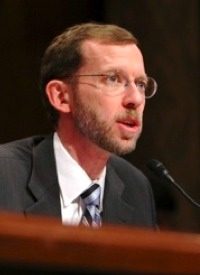
Elmendorf said that solving the budget crisis would “require increasing revenues significantly as a percentage of gross domestic product (GDP), decreasing projected spending sharply, or some combination of the two.”
But Elmendorf explained that either continuing deficit spending or raising taxes would destroy the economy. “One policy that would prevent the increase in debt would be to raise revenues in line with the projected rise in spending. As evidenced by the estimated fiscal gap, the required increase in revenues under that approach would be large. If the increase occurred through higher marginal tax rates, incentives to work and save would be reduced and economic growth would slow.” Elmendorf even noted that “if spending grew as projected and taxes were raised in tandem, tax rates would have to reach levels never seen in the United States. High tax rates would slow the growth of the economy, making the spending burden harder to bear.”
The nation faces a choice of crushing taxes and debt or spending cuts, and Elmendorf says that escaping from the current recession will not help the scenario. “If spending policies did not change and outlays indeed grew to the projected levels relative to the size of the economy, maintaining a sustainable budget path would require a similar rise in federal taxation. The recession has temporarily depressed revenues to an estimated 16 percent of GDP in this fiscal year. But even typical revenue levels would be too low to support projected spending. Over the past half-century, total federal revenues have averaged about 18 percent of GDP — well below the level of projected spending under either scenario.” The federal government cannot grow it’s way out of debt, as "supply side" economists have long held. Only serious budget cuts or gigantic, unprecedented tax increases would close the fiscal gap.
Elmendorf explained that the primary reasons for increased federal spending are Medicare, Medicaid, and Social Security, which historically “grow relative to the economy both because health care spending per beneficiary is projected to increase and because the population is aging.”
Keeping on the same fiscal spending path would grow an uncuttable item in the budget that would soon become gigantic, Elmendorf says, stressing that “federal debt held by the public will soar from 41 percent of GDP at the end of fiscal year 2008 to 60 percent at the end of fiscal year 2010. Higher debt results in permanently higher spending to pay interest on that debt (unless the debt is later paid off ). Federal interest payments already amount to more than 1 percent of GDP; unless current law changes, that share would rise to 2.5 percent by 2020.”
Photo of CBO Director Douglas W. Elmendorf: AP Images



